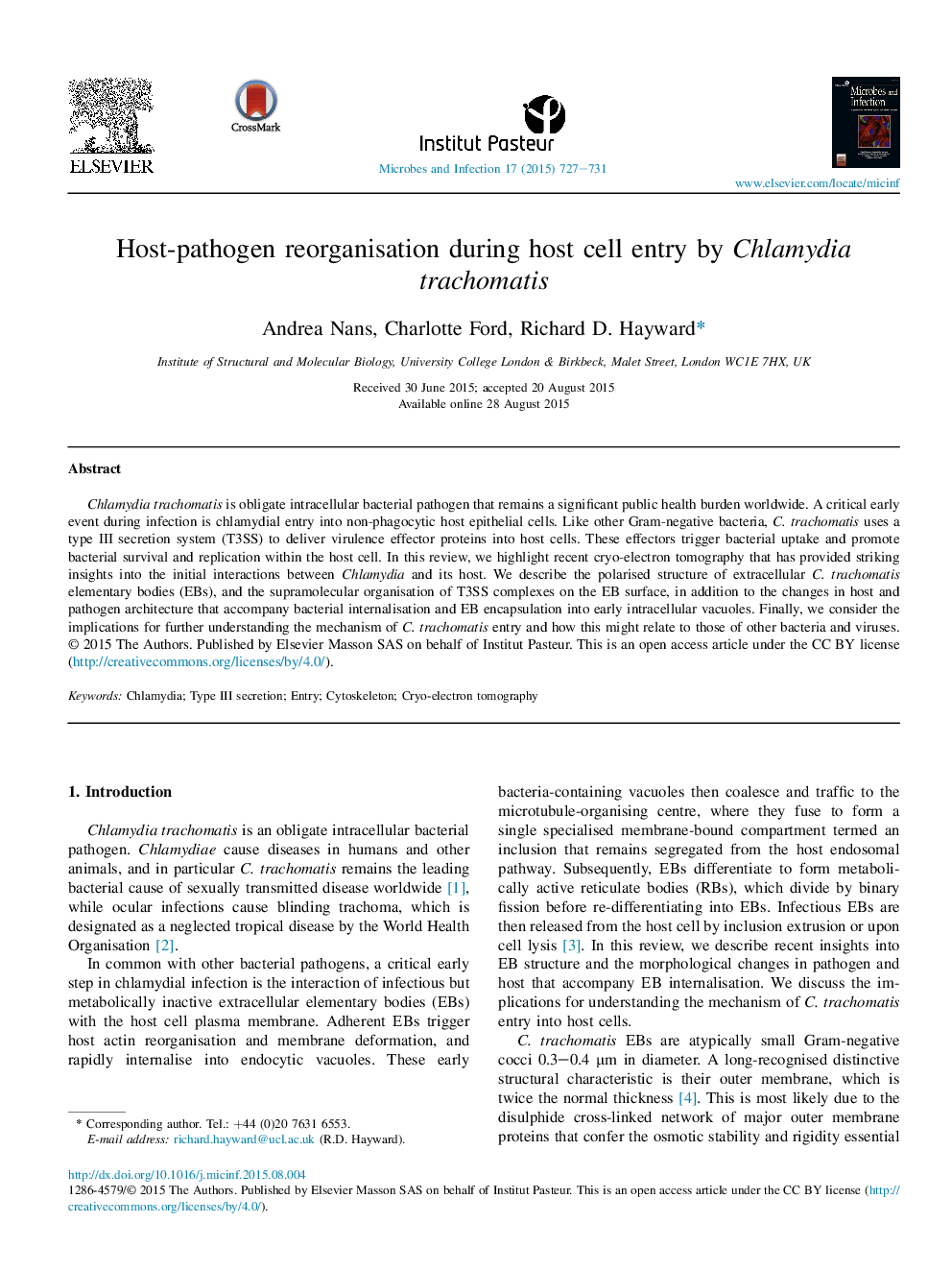| Article ID | Journal | Published Year | Pages | File Type |
|---|---|---|---|---|
| 6135547 | Microbes and Infection | 2015 | 5 Pages |
Abstract
Chlamydia trachomatis is obligate intracellular bacterial pathogen that remains a significant public health burden worldwide. A critical early event during infection is chlamydial entry into non-phagocytic host epithelial cells. Like other Gram-negative bacteria, C. trachomatis uses a type III secretion system (T3SS) to deliver virulence effector proteins into host cells. These effectors trigger bacterial uptake and promote bacterial survival and replication within the host cell. In this review, we highlight recent cryo-electron tomography that has provided striking insights into the initial interactions between Chlamydia and its host. We describe the polarised structure of extracellular C. trachomatis elementary bodies (EBs), and the supramolecular organisation of T3SS complexes on the EB surface, in addition to the changes in host and pathogen architecture that accompany bacterial internalisation and EB encapsulation into early intracellular vacuoles. Finally, we consider the implications for further understanding the mechanism of C. trachomatis entry and how this might relate to those of other bacteria and viruses.
Related Topics
Life Sciences
Immunology and Microbiology
Immunology
Authors
Andrea Nans, Charlotte Ford, Richard D. Hayward,
